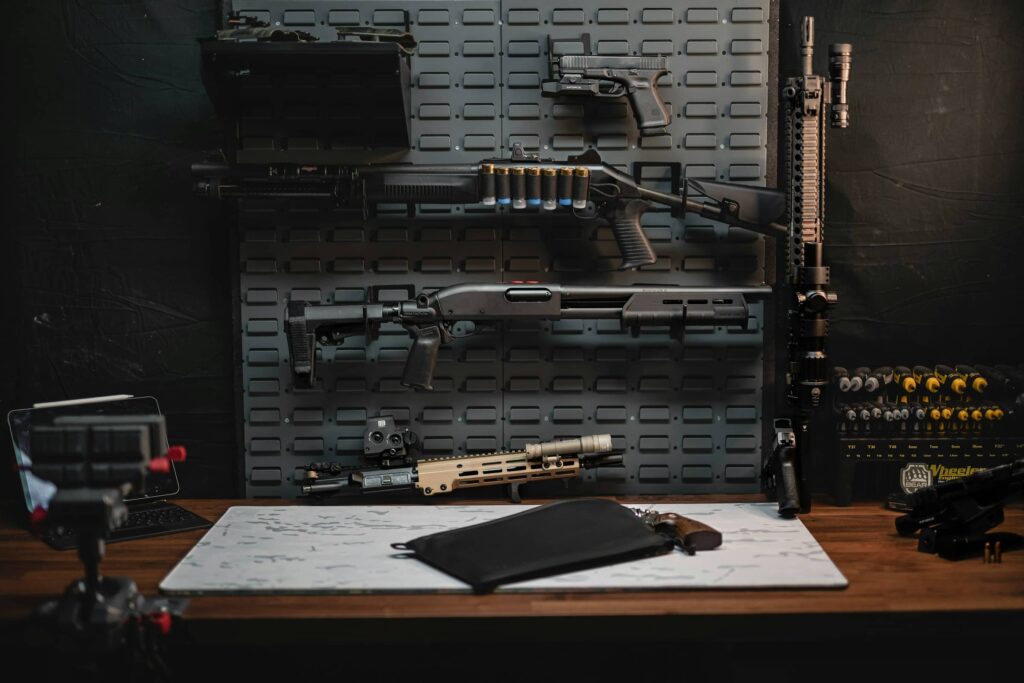
Understanding Vehicle Castle Doctrine: Your Rights on the Road
Table of Contents
Introduction
Imagine you’re driving home late at night when suddenly, a stranger approaches your vehicle at a stoplight. Your heart races as you wonder, “is this guy about to harm me, can I use my gun to defend myself, would I go to jail if I shoot him?” This scenario, while rare, raises a critical question for gun owners: do your self-defense rights extend to your vehicle the way they do to your home?
As a firearm owner for over 10 years, I’ve always wondered at what extent can I defend myself — especially with road rage becoming a bigger and bigger issue. Trust me, it’s complex. But here’s the good news: I’ve done the homework for you. This article will break down the Vehicle Castle Doctrine and help you understand how your self-defense rights extend to your vehicle. My goal is to help you be safe and on the right side of the law.
So buckle up (pun intended)! By the time we’re done, you’ll have the knowledge you need to understand your rights when it comes to self-protection in your car.
I have to mention: I am not an attorney and this shouldn’t be taken as legal advice (I don’t want the ATF knocking on my door).
Helpful Links:
Check out my post on Stand Your Ground law to understand the rationale behind the Castle Doctrine. This post covers the Castle Doctrine in your home. Having the right gun storage in your vehicle is important; check out this post to learn about the best gun safes and storage options for your vehicle. Crossing state lines can be an issue depending on if you have NFA items and which state you are crossing into — my post on interstate travel is a great resource to learn more.
What is Vehicle Castle Doctrine?
You might be familiar with the Castle Doctrine in the context of defending your home. The basic idea is simple: if someone unlawfully enters your home, you’re allowed to use force—even deadly force—to defend yourself without the obligation to retreat or flee.
Now, let’s talk about your car. In recent years, some states have expanded the Castle Doctrine to cover vehicles, leading to what’s often called the Automobile Castle Doctrine or Car Castle Law. Essentially, your vehicle becomes an extension of your home when it comes to self-defense.
I remember the first time I learned about this concept in my License to Carry class. The idea that my car could be treated as a “mobile castle” was reassuring. But here’s the catch: not every state recognizes this.
Some states fully extend castle law to cars, while others still apply the traditional duty to retreat when you’re in your vehicle.
You must be very careful when in Duty to Retreat states since a prosecutor will have an easy argument by pointing out you could have driven off.
The Duty to Retreat states are: Connecticut, Delaware, Hawaii, Maine, Maryland, Massachusetts, Minnesota, Nebraska, New Jersey, New York and Rhode Island.
Check out USCAA’s map.

Legal Basis for Vehicle Castle Doctrine
So, how did this concept evolve? The Vehicle Castle Doctrine emerged as an extension of the traditional Castle Doctrine, especially as Stand Your Ground laws began gaining traction in the early 2000s. Florida, a pioneer in this area, passed a law in 2005 that explicitly extended Castle Doctrine protections to vehicles.
But the laws vary significantly between states. Some have explicit statutes, while others rely on court interpretations. For example, states like Texas and Florida make it clear that your vehicle is protected under Castle Doctrine, while states like California and New York take a more ambiguous approach, leaving room for legal interpretation.
This video by U.S. LawShield provides some context on when the Castle Doctrine can apply.
It’s important to remember that federal law can also come into play, especially if you’re traveling between states. Crossing state lines without knowing the local laws can lead to legal issues—so always do your research.
States That Recognize Vehicle Castle Doctrine
As of 2024, a number of states have embraced the idea of vehicular self-defense. States like Texas, Arizona, and Florida are examples where you can defend yourself in your vehicle as you would in your home. These states offer robust legal protections under Vehicle Castle Doctrine, allowing you to respond to a deadly threat without retreating.
However, other states—like California and New York—don’t explicitly extend castle law to vehicles. In these states, you could still be expected to retreat if safe to do so, before using force.
Then there are states like Vermont and Washington, D.C., where the idea of a Car Castle Doctrine is virtually non-existent. Here, your car isn’t considered a “castle,” and self-defense laws are much stricter, often requiring you to retreat if possible.
In these Duty to Retreat, states you have to be sure all possible methods of retreat or de-escalation have been exhausted
Before hitting the road, it’s crucial to know the specific laws of the states you’ll be driving through. A little research ahead of time can save you a lot of legal headaches (check my Helpful Links section).
States that have some form of Castle Doctrine laws
- California
- Colorado
- Illinois
- Iowa
- Oregon
- Vermont
- Virginia
- Washington
- Wyoming
- New Mexico
- Nevada
- New Hampshire
- North Carolina
- North Dakota
- Ohio
- South Dakota
- Tennessee
- Texas
- Utah
- West Virginia
- Indiana
- South Carolina (as part of Stand Your Ground law) item
Key Elements of Vehicle Castle Doctrine Laws
While the Castle Doctrine in vehicles varies by state, several common elements appear across the board:
1. Reasonable Fear of Harm: To justify the use of force, you must have a genuine belief that you’re in imminent danger of death or serious bodily harm. Merely feeling scared or uncomfortable won’t meet the legal threshold.
2. Duty to Retreat: In states with Stand Your Ground laws, there’s no legal obligation to retreat before using force in your vehicle. However, even in these states, the use of force must still be proportional to the threat.
3. Presumption of Reasonableness: In some states, if someone attempts to unlawfully enter your occupied vehicle, the law presumes you were in reasonable fear for your safety. But this presumption can be challenged in court, depending on the specifics of the incident.
4. Limitations: Not all actions are protected under Vehicle Castle Doctrine. For example, you generally cannot use deadly force against law enforcement officers acting within their official duties, and engaging in criminal activity yourself nullifies your rights under this law.
Practical Implications for Vehicle Firearm Owners
Now that we’ve covered the legal foundation, let’s talk about what this means for you as a vehicle firearm owner.
1. Carrying a Firearm in Your Vehicle: Depending on the state, you may be able to have a loaded firearm within reach, even without a concealed carry permit. But be mindful of car gun laws, which vary widely. Always store your firearm securely to avoid any issues during traffic stops or if you leave your vehicle unattended.
2. Traffic Stops: During a traffic stop, some states require you to inform the officer immediately if you’re carrying a firearm. Others only require you to disclose this information if asked. Regardless, always remain calm, follow the officer’s instructions, and keep your hands visible at all times.
3. Documentation and Insurance: Keep copies of your firearm permits and training records in your vehicle. In case of an incident, these documents can help demonstrate that you’re a responsible gun owner. You might also consider getting vehicle firearm insurance, which can cover legal fees if you’re involved in a self-defense case.
Personal anecdote: When I was getting my License to Carry (LTC), the instructor asked the two Houston Police Department officer in my class what would be the best way to tell an officer performing a traffic stop that you have a firearm in the car.
The officers both said they would love for the driver to give them their LTC / CCL card with their Drivers License. This let’s the officer know that you know about firearms and there might be one in the car. When they ask you if you have any firearms in the vehicle you tell them exactly where it/they are while keeping your hands on the wheel.
What you don’t want to say is that you have a GUN in your car when the officer approaches your window. Because, if another officer is walking up the passenger side of your vehicle they are going to expect a shootout.
The officers also mentioned a LTC or CCL would help with the officer letting you off easy as long as it is a minor violation and you are respectful to the officer.
Conclusion
Understanding Vehicle Castle Doctrine is crucial for any gun owner who spends time on the road. While the laws can be complicated and vary by state, knowing your rights can make all the difference in a life-threatening situation.
Remember, your vehicle may not always be your castle—but when it is, you need to know the rules. Stay informed, carry responsibly, and drive safely.
- The Right Gear for Upland Hunting - December 21, 2024
- How to Get a Suppressor in a Few Steps - December 5, 2024
- What is The Protection of Lawful Commerce in Arms Act? - November 15, 2024



